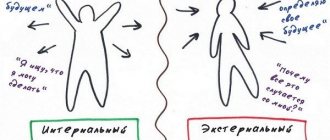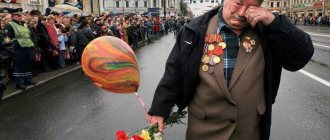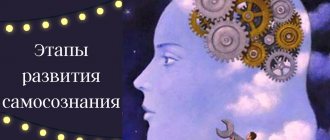Popular topics today
- Images of the Word about Igor's Campaign
Much knowledge about the images of historical figures is conveyed to the present time by tales and legends. They cover many events from the history of the Russian people.Read also: How to make beard hair darker?
- Realism in the works of Turgenev
Ivan Sergeevich Turgenev is a Russian writer of the second half of the 19th century. Turgenev's work made an invaluable contribution to the development of literature of that time. The main direction of Ivan Sergeevich’s writing activity was realism. - Essay The book is our friend and advisor 7th grade
The book is man’s eternal companion and best friend. From birth, the child is read books by his parents, and later he reads them himself. And so it continues day after day, year after year. - Essay What is escape from reality?
(final) In life, every person has both good and bad moments. We all notice that they seem to alternate. In unhappiness, a person is prone to self-pity. The worst thing is that feelings and moods leave imprints on our worldview
What does spiritual poverty lead to?
In contrast to the spiritual wealth of a person is the disease of our society - spiritual poverty.
Understanding what it means to be a spiritually rich, whole person cannot be revealed without negative qualities that should not be present in life:
- ignorance;
- callousness;
- life for one’s own pleasure and outside the moral laws of society;
- ignorance and non-perception of the spiritual and historical heritage of their people.
This is not the entire list, but the presence of several traits can define a person as spiritually poor.
What does the spiritual impoverishment of the people lead to? Often this phenomenon leads to a significant decline in society, and sometimes to its death. Man is structured in such a way that if he does not develop, does not enrich his inner world, then he degrades. The principle “if you don’t go up, you slide down” is very fair here.
How to deal with spiritual poverty? One of the scientists said that spiritual wealth is the only type of wealth that cannot be deprived of a person. If you fill yours with light, knowledge, goodness and wisdom, then this will stay with you for life.
There are many ways to become spiritually enriched. The most effective of them is reading decent books. This is a classic, although many modern authors also write good works. Read books, respect your history, be a man with a capital “H” - and then poverty of spirit will not affect you.
How can a person’s inner world be revealed?
A person who has a rich inner spiritual world quickly finds a common language with any interlocutor, is able and ready to cogently express his own point of view, has a wide range of feelings and is not afraid of loneliness. How the inner world of a person, which is characterized by poverty, is revealed can be noted in practice:
- limited range of feelings;
- laziness;
- lack of goals and aspirations, a favorite activity;
- primitive leisure;
- limited circle of social contacts;
- insincerity in relationships and so on.
The inner world of a person in psychology is defined as a factor of success in a particular field of activity.
What does it mean to be a spiritually rich person?
Now we can clearly outline the image of a person with a rich inner world. What kind of spiritually rich person is he? Most likely, a good conversationalist knows how to not only speak so that they listen to him, but also listen so that you want to talk to him. He lives according to the moral laws of society, is honest and sincere with his surroundings, he knows and will never pass by someone else's misfortune. Such a person is smart, and not necessarily due to the education he received. Self-education, constant food for the mind and dynamic development make it so. A spiritually rich person must know the history of his people, the elements of their folklore, and be diversified.
Its components
Emotions are a component of a person’s inner world
The inner world of an individual must be guided by certain values.
- Responsibility. Is the ability of an individual to keep behavior under control in accordance with accepted norms. Such a person can be responsible for his actions, both to himself and to other people. A responsible person respects rights and moral principles. Such an individual independently determines social responsibilities for himself, their implementation, and evaluates his actions. When a person begins to admit his own mistakes, other people begin to respect him. If an individual wants to avoid answering for his misdeeds, this indicates his poor inner world.
- Independence. The ability to rely on one’s own strengths, both intellectual, physical and spiritual, when making important decisions. An independent individual will not be influenced by someone else's opinion or someone else's assessment. Such a person can withstand external pressure. He ponders the problems that arise in his path, determines the correct pattern of behavior and follows it in accordance with his conscience.
- Morality. An individual’s acceptance or refusal to accept the values that exist in a particular society, standards and norms of relationships. Maintaining the rules and following them forms a moral personality, disobedience and denial - an immoral one. The main factor that influences an individual’s morality is a feeling of shame, the experience of particular dissatisfaction with oneself.
- Honor is how a person is assessed by others. It determines how people treat a particular individual. The assessment is based on the honesty of the obligations fulfilled.
- Dignity. The way a person evaluates himself, realizes his valuable qualities, type of worldview, and abilities.
- Will. Allows a person to make decisions and take responsibility for them. He himself determines what his life should be. Will allows you to actively resist basic instincts and determines human development. For example, when a person has a strong feeling of hunger, he will not commit murder or theft, but will try to find a job where he can earn food with his labor.
- Emotions are strong feelings, both positive and negative, about a certain situation. They can replace each other in a short period of time. There is confidence that female representatives are more emotional than male representatives, and accordingly their inner world of women is deeper.
- Feelings are reactions that give rise to emotions. A condition that undergoes little change.
- Mind, the need for spiritual and physical development.
- Worldview. It is a set of certain statements that have been formed throughout life, rules and its own laws. It may change as you grow older, but usually only slightly.
Peculiarities
- The outer world influences the inner one. It can be changed by any chance. For example, an embittered person who grew up in cruel conditions is fully confident that the whole world that surrounds him is cruel. However, after a random passer-by helps him with some problem, or maybe even with a vital issue, this individual’s views suddenly change. He himself begins to help people, even though he had never behaved like this before.
- The inner world can strive for self-regulation, stability and stereotyping.
- It develops over time (to get to the future from the past, you need to go through the present).
- Changes in the inner world are irreversible. So, if a person experienced betrayal, then this event left its imprint in memory. This experience will not be erased from memories, but the person will definitely decide how to live further.
Development
Personality goes through a number of natural stages of development that correspond to calendar age and social transformation.
Read also: Details on how to make a drill in Terraria
The first stage is the period of childhood .
At this time, a person’s personality and his inner world are most fully open to everything new, and the desire for knowledge and learning is great. Also, a person involuntarily “copies” behavior patterns .
beliefs and orientation of activities develop . A person determines his social role, on the basis of which he develops behavior patterns in the future.
At this time, character is rapidly developing, which, however, is still subject to the influence of education and change from the outside. a sensitive period for the individual , since all reactions are aggravated, and a change in personal characteristics is possible if any traumatic situations occur.
The next stage is the further assertion of one’s social position. The personality becomes more integral due to professional fulfillment and building one’s own family.
Are principles and worldviews the same thing?
Principles are patterned subjective attitudes of the mind towards situations, people and the world, which often govern a person. They are individual for everyone, develop in the process of upbringing and are laid deep in the subconscious by life experience.
The worldview has no patterns - it is flexible, but at the same time stable, like bamboo: it can bend strongly, but in order to break it, you will have to try very hard. These are moral values, priorities in choosing a life path and ideas about what life should be like.
Main part
In the main part, which follows immediately after the introduction, you can write anything you want, in principle. This should be a statement of your opinion and your own thoughts. Many, for example, decide to write an essay on the topic “Nature and the inner world of man.” An essay of this kind can also become good. Indeed, many people are looking for peace and tranquility in nature. In silence, enjoying the barely audible rustling of leaves and the calm surface of the river, sitting on a wooden pier, drinking hot tea from a thermos. If a person wants this, it means that his inner world requires precisely such moments of unity with nature.
Definition of the concept
What is inner peace?
This definition has been included in psychology since ancient times.
In the works of philosophers, the main object of research and observation was the inner world of man.
It combines all the features of mental activity and the product of its active actions. The main components of the inner world are:
- Character is a set of behavioral traits and reactions that form the mental adaptation of an individual to environmental conditions.
- Intelligence and thinking. Both of these synonymous concepts reflect mental work and a person’s capabilities for analysis, synthesis, abstraction, and memorization.
- Goals and objectives. They reflect the direction of mental activity. Their absence is also telling.
- Motivations are motivating elements. Based on them, the previous paragraph is formed.
- Ideals and principles reflect the ideological and moral orientation of the individual.
- Beliefs are a concept that expresses a set of personal reactions and attitudes towards a certain problem.
- Temperament characterizes the pace of mental processes and their amplitude; it is an innate characteristic.
Memory and memories. This is a baggage of impressions about the world that can be passively stored in a person’s mind or constantly influence his behavior (the pressure of negative experience and vice versa).
Hobbies. They characterize the free inclinations of the individual and the degree of their implementation.
Lived experience. Reflects past events and the analysis carried out about them.
All of the above points form a complex structure of interconnected elements. Some of them, for example temperament, are innate personality characteristics. But memory and experience are built as a person develops.
Based on the synthesis of these phenomena, character, goals, direction of activity, as well as hobbies are formed. Feedback is formed in the mutual conditionality of changes in one depending on the other.
Memories and experience can affect one’s hobby - pleasant memories of vacations at sea will stimulate a person to learn a new sport, which will develop determination and strength of character.
A synonym for this concept is the human soul, its content. But the soul reflects the personal characteristics of morality and morality, built on the basis of other components of the inner world. But the content reflects this definition more closely, characterizing all elements of a person’s personality.
Folk wisdom
- “Beauty to the crown, and intelligence to the end . This folk wisdom says that external beauty is short-lived, and a person’s mind will remain with him until the end of his life, so it is necessary to develop and improve it in every possible way.
- “The beard is gray, but the soul is beautiful . The meaning of this proverb is that a person can be unsightly on the outside, but very beautiful at heart. And this inner beauty is much more important than external beauty.
- “He looks handsome in an outfit, but without it he looks like a tree stump . With this proverb, our ancestors wanted to say that there are people who attract attention only with their appearance. If their beauty is removed, then nothing will remain, because their inner world is poor.
- “Not handsome, but honest in soul . Our ancestors valued inner beauty in a person first and foremost. Therefore, an honest soul was much more important to them than appearance.
- “The tree is unsightly, but the fruit is delicious . This proverb compares a person and his soul to a tree and a fruit. Even an ugly tree can have very sweet fruits, and so can a person: an ugly face is not a sign of the same soul.
- “Cute on the outside, but rotten on the inside . Our ancestors have long noticed that a person who is beautiful on the outside can be very mean and evil on the inside. The meaning of this proverb is that you cannot judge people by their appearance.
- “Beauty for a while, kindness forever . Everyone knows that it is human nature to grow old, so external beauty gradually fades. But his virtues will remain until the end of his life.
- "All that glitters is not gold . In this proverb, our ancestors compare a person to a precious metal. A shiny coin is not necessarily gold, and so is a person; external beauty does not mean having a beautiful soul.
- . ” Our ancestors valued first of all the human soul. If a person has a bright soul and pure thoughts, it doesn’t matter what he looks like on the outside.
- “Small in body, but great in deed.” The meaning of this proverb is that a physically weak person is capable of great things. A weak body does not mean a weak human character.
Essay 2
A ray of sunshine pouring directly into the heart deifies the human soul. The inner nature of man is spirituality. It includes feelings, thoughts, emotions, sensations, mind, outlook on life, beliefs and worldviews of the individual. The rich spiritual inner world of an individual is filled with the gifts of the Cosmos and the Universe, events of the surrounding world, faith, goodness and comprehensive earthly love for all living things.
The inner human essence is very diverse! She has so many shades of character, positive and negative traits. A person striving for goodness and light is endowed with nobility, mercy, responsiveness, and friendliness. He is ready to help everyone and make people happy! Such people are highly valued in society.
Inner peace is a special state of mind. It is given to everyone from birth. Over the years, a person improves it by interacting with the environment. It is interesting to communicate with intellectually developed people. They know a lot. You can talk to them on any topic. They are always aware of all affairs and life events. Such individuals are smart, educated, and spiritually developed. They read a lot, travel, attend lectures and seminars, study science and... believe in miracles. Such people always spend their time usefully. They have an interesting, multifaceted life, full of romance, exploits and unusual adventures.
A person who does not believe in anything, is behind the times, fixated on his problems and thinks only about material things is empty and unattractive. His spiritual world is on the verge of disaster. A wonderful man with a beautiful soul! He may not be very good-looking in appearance, but his heart is pure, faithful and deep. A beautiful appearance often turns out to be a lure, and only by communicating with him can one understand his inner essence. People with a bright and catchy appearance often turn out to be stupid inside, and then external beauty is no longer interesting.
A person must constantly improve, live in peace and harmony with others, harmonize space with his divine thoughts. Such a personality is endowed with unique charm and uniqueness. She is extraordinary and brilliant. This is an exalted nature with genius abilities in literature, music, art, theater and cinema. Such a person is talented, successful and happy!
The spiritual world of man is a pearl shining with bright light. This personality always strives for self-development, self-realization and inner freedom. The transformation happens very quickly. A person awakens and is filled with energy, filling the body with strength. He may have abilities that he didn’t even know about. Spirituality works great miracles!
It’s wonderful that interesting, creative and spiritual people live on earth. They are beautiful inside and out! A guiding star shines for them, fulfilling all their desires! May their kindness flow forever, and may the world bloom with great love for all living beings on earth!!!
Examples from life
- Inner peace can be expressed not only in character, but also in creativity. I admire the paintings of the Dutch artist Vincent Van Gogh; we can see parts of his soul, gracefully painted with brush strokes. Van Gogh was self-taught and took critics' reviews too seriously, although his self-expression met with many admirers. Seeing his “Boot”, we understand that the painter expressed fatigue and disappointment, and did not simply depict shoes.
- (48 words) You can turn your soul inside out in musical language, as many artists do. It is no coincidence that the British rock group The Beatles made millions of people fall in love with themselves and their songs. Not only the form, but also the content of the tracks was a great success. The musicians opened up their inner world to the listeners, which is why they were so warmly received by the public.
- (44 words) Walt Disney not only shared his talent in cartoons, but also brought his ideas to life. Disney has delighted billions of children and adults with the embodiment of their fantasies, giving the world fairy-tale characters brought to life in an amusement park. The inner world of Walt Disney turned the real world of each of us upside down.
- (54 words) When I first meet people, for example, I don’t open up to them right away. At first they only see appearances, but over time, when I begin to share my impressions, stories, interests, they notice my personality. Only by trusting close people will I reveal my secrets to them and, thereby, invite them to visit my inner world, like an amusement park.
- (59 words) Not long ago I met a girl who told me that when she reads a poem or any other text, periodically she imagines what color is inherent in each letter. She sees the letter “A” only in black, and the letter “I”, for example, exclusively in red. Having opened the door to her imagination a little, I realized that this person has a rich inner world.
- (50 words) Many people gave names to their toys in childhood. What is this if not our own inner world? By comparing a separate group of toys, we imagined them as a family, arranged meetings for them and made their plans for life. Our imagination is our inner world, therefore, from a very early age, any person is interested in his soul.
- (65 words) Dreams are an integral part of a person’s inner world. One girl told me that she wanted to learn to sing and dance. As a child, her stage was her room, her microphone was her hairbrush, and her audience was her reflection in the mirror. Over time, she decided that it was time to get serious about what she loved. Now she is engaged in singing and dancing and is glad that she did not leave a piece of her world in her room, but tried to realize it.
- (65 words) My dad said that since childhood he imagined a certain image of his beloved: his wife should be interested in the same things that he himself is. At the history department, he met my mother and immediately fell in love. Dad realized that she was the same girl from the world he had imagined. Only he was lucky to meet her in real life. So you don’t need to be afraid of your inner “I,” you need to give it the will to open up.
- (44 words) Dreams are the most important element of a person’s inner world. I remember dreaming that the far side of the moon was covered in white chocolate, and nearby there was a deep lake of light green color. Then, of course, I learned the truth, but my fictitious stories about a specific location remained a bright fantastic canvas in my inner world.
- (59 words) One boy told me how he loved comics. He was seriously interested in many characters: he studied history, the abilities of each of them, and as a child he sincerely believed that only they were capable of miracles. The boy couldn’t imagine his world without superheroes, so he decided to become one in real life - to help people. Sometimes our inner essence grows into a calling; we just need to give it a voice.
Arguments
L.N.
Tolstoy, "War and Peace" . The formation of a person’s inner world occurs under the influence of vivid life experiences. This is proven by an example from the epic novel War and Peace. At the beginning of the book, Andrei Bolkonsky considered Napoleon his idol and wanted to earn fame through military exploits. He left high society and even his young wife without regrets, because he was bored with all this. But the battle at Austerlitz changed the prince’s worldview: he was wounded and saw the wrong side of the war. Now Napoleon seemed to him a small and insignificant person, and the bloody massacre shattered the rose-colored glasses through which he viewed battles. When Bolkonsky returned home, he experienced another shock - he lost his wife. Having lost his purpose in life and his loved one, Andrei withdrew into himself and experienced a depressive state. After a while, he went on business to the Rostov estate, and there he found a new love - Natasha. The gloomy and gloomy hero was transformed and experienced great happiness, having received the consent of his chosen one. But her betrayal again plunged Bolkonsky into the abyss of melancholy and anger. He quenched his thirst for revenge only when he saw his offender seriously wounded. And finally, the most severe trauma revealed to Andrey the truth of absolute and endless love. Every bright life event influenced Bolkonsky’s inner world and changed his ideas about life and himself.
N.M. Karamzin, “Poor Liza”
. The formation of the inner world is influenced by factors such as origin, level of income and even place of residence. Thus, in the story “Poor Liza” we are presented with two heroes with different spiritual content. Lisa is a peasant girl who, due to her origin, is accustomed to work and is content with a modest life alone with her family. She lives in the village, so she is close to nature and has a natural character. All her feelings are strong and sincere. Like all living things, she is guided by emotions. But Erast is a rich nobleman, and for him the main thing in life is luxury. He is not used to working, he cannot provide for himself, so more than anything else he is afraid of poverty. He lives in the city, so he is far from nature and its laws. For him, appearance is more important than substance, and he is dependent on the opinion of society, because he lives in a large crowd of people. He is guided by reason and does not always listen to the voice of his heart in order to maintain his privileged position. The inner world of each of the heroes was formed this way and not otherwise, because they had the conditions and circumstances of life corresponding to it.
A.S. Griboedov, "Woe from Wit"
. Education influences the development of the inner world. Acquiring new knowledge changes a person’s worldview and even his character. This is confirmed by an example from the play “Woe from Wit.” Chatsky studied at a foreign university and in a few years became a very smart and perspicacious person. Returning home after studying, he immediately noticed how primitive and immoral the society in which he had previously moved was. He was struck by the ignorance of the crowd, which had existed before, but now became obvious to him. Therefore, the once kind and flexible Alexander, who played with Sophia and stayed with Pavel Afanasyevich, turned into a caustic and witty critic, condemning the serfdom of the Moscow master. Chatsky ridiculed the passion of his compatriots for foreign fashion, their bribery, nepotism, veneration and other vices. He gained enough knowledge and experience to understand how harmful all this is for Russia. His inner world was influenced by his foreign education, which revealed to him the reasons for the slow development of the country.
I.S. Turgenev, "Fathers and Sons"
. A person’s inner world is influenced not only by his social status and upbringing in the family, but also by life circumstances. For example, Arkady Kirsanov, the hero of the novel Fathers and Sons, is a nobleman who inherits an estate and a stable income. Therefore, when his friend works, Arkady “sybarizes”, because he has no need to look for a calling and has nowhere to rush. Under the influence of his origin and upbringing, he became a gentle, thoughtful and driven person who willingly devoted time to his thoughts and dreams, since the financial side of his life was defined and secured. Having lost his mother early, Arkady really needed a woman’s affection and love, so he got married very early and devoted himself entirely to his family. The moral values of Kirsanov Jr. were also formed under the influence of circumstances and upbringing: his kind and gentle father doted on him and laid the foundation for his sentimental ideas about the world and people. Therefore, Arkady grew up to be a kind, sympathetic, honest and loyal person. We can be convinced that his inner world is a projection of his environment, upbringing, as well as social and economic status.
A.S. Pushkin, “Eugene Onegin”
. The inner world of a person is formed under the influence of innate temperament. We can find proof of this pattern in the novel “Eugene Onegin”. Tatyana and Olga are sisters who lived in the same conditions and received the same upbringing. However, girls are undoubtedly different from each other. Olga is a flighty coquette, not distinguished by the depth of thought and feeling. She has no special interests, she does not think about her actions and their consequences. She is boring and predictable, like any frivolous beauty. But Tatyana has a rich inner world. Since childhood, she did not like to play and have fun, she moved away from her friends and was thoughtful. The heroine read a lot, often walked in solitude and enjoyed nature. She listened to folk tales with special attention and believed in fortune telling. Only serious and strong feelings arose in her heart. She became a devoted wife and a strong personality, capable of sacrificing her own interests for the needs of her family. All these qualities and inclinations were innate in Tatyana, so we can say that a person’s inner world is formed under the influence of a genetic predisposition to some properties of the soul.
F.M. Dostoevsky, “Crime and Punishment”
. Living conditions always leave their mark on the development of the inner world. Thus, the talented and intelligent student Rodion Raskolnikov becomes a murderer, being oppressed by poverty. The gifted young man had no money to continue his education, and his mother and sister made unimaginable sacrifices trying to ensure his studies. He felt his powerlessness to influence fate and clearly saw how unfair it was towards him. The feeling of the wrongness of life gave rise to Rodion’s rebellion, which found expression in a theory that places people in the positions of followers and leaders. Hunger, dirt, the stuffiness of the city, gloomy thoughts and impressions - all this pushed the hero to a desperate decision - testing the theory through murder. This is how a kind and noble young man, who received an education, became a brutal criminal fugitive from justice. It was the unbearable living conditions that became a burden that put pressure on Raskolnikov’s inner world and changed it for the worse.
A.I. Kuprin, "Olesya"
. The environment greatly influences a person’s inner world. We can be convinced of this by reading the story “Olesya”. The main character lived alone with her grandmother, the healer and fortune teller Manuilikha. She did not communicate with the locals, as they considered her a witch, like her grandmother. The supernatural abilities of women fed the superstitions of the local peasantry. But distance from people did the girl good. Olesya grew up very independent, unique and original. She did not borrow the prejudices and misconceptions of the peasant environment and was close to nature, which imbued her with its wisdom and strength. Olesya knew the secrets of plants and animals, and knew how to heal both. She gave her heart to love without calculation and formalities of marriage, because society has not yet spoiled her with its possessive attitude towards people. If Olesya had grown up among ordinary peasant women, she would not have developed her individuality and would not have become such a free-thinker. This suggests that the environment of nature in this case enriched the heroine’s inner world.
I.A. Bunin, “The Second Coffee Pot”
. The inner world of a person is influenced by the social origin of the individual and his life experience. This was shown by I.A. Bunin in the story “The Second Coffee Pot”. Katya was born into a poor peasant family and was orphaned early. No one was involved in her upbringing and education, so she even spoke with difficulty, distorting words and phrases. In the city she had to work in a tavern for her uncle, but his wife disliked her niece and intended to sell her to a brothel. The girl was saved by the artists, who gave her a job as a model and told her to leave the tavern. However, Katya still became a victim of violence on the part of one of the painters, and since then she has become his partner. And then she had to wander from one house to another. All this time, her inner world did not develop in any way, because the girl was constantly suppressed and used as decoration, a servant, and an errand girl. Katya herself did not need anything more, humbly accepting her fate. Her meek character, lack of moral values and spiritual needs are the result of difficult life experience and peasant heritage.
L.N. Tolstoy, "Prisoner of the Caucasus"
. L.N. Tolstoy believes that the inner world is formed by such factors as family, level of income and a person’s life experience. Reading the story “Prisoner of the Caucasus”, we can be convinced of this. Zhilin comes from a poor nobility. He has only one sick mother in his family, so he is forced to rely only on himself and work hard to provide for himself. Difficult circumstances developed such qualities of his character as courage, perseverance and resourcefulness. He thinks not only about himself, but also about the fate of loved ones. Kostylin is a completely different person. This is a selfish and weak-willed rich man, behind whom wealthy and influential relatives have always stood. Therefore, he relies on them for everything and does nothing himself. Kostylin does not strive for anything and meekly accepts the blows of fate, knowing that his powerful family will decide everything for him. He thinks only about himself and constantly complains about difficulties, expecting support and understanding from the whole world. He is lazy, lacking initiative and weak. In this example, it becomes obvious that a person’s inner world greatly depends on his standard of living, family upbringing and biographical circumstances.
M. Gorky, “At the Bottom”
. The inner world is influenced by a person's life experiences. As you know, the trials and hardships experienced largely determine one’s worldview. This is proven by an example from the play “At the Bottom”. Luka became such an understanding and kind interlocutor because he himself endured and suffered a lot: “They crushed him a lot, that’s why he’s gentle,” he admits. Luka lived in Siberia for a long time, and, apparently, escaped from hard labor. Life confronted him with different people, communication with whom complemented his picture of the world. For example, a meeting with two escaped convicts armed with an ax taught the hero a lot. Two thieves attacked the dacha he was guarding. But Luke punished them, and then got into a conversation and found out that the men behaved aggressively because they could not convince passersby to help them with requests and persuasion. They just wanted a piece of bread to satisfy their hunger, but no one responded. They had to take up arms and get food by force. This story convinced Luka that there are no bad people, but there are those who need help, but receive only indifference from society. It was the totality of life impressions that enriched the elder’s inner world.









